First Look: 2018 Ducati Multistrada 1260
Ducati goes bigger and techier
With a long list of upgrades over the last generation of Multistradas, this year’s ’Strada is pretty much all new for 2018. It gets an upgrade with the new Ducati Testastretta DVT (Desmodromic Variable Timing) 1262cc engine, a new chassis, more advanced electronics, and an aesthetic update that includes new fairing panels and lighter, sportier looking wheels.
Ducati says the Multistrada essentially offers four bikes in one: from sportbike to long- distance tourer, from everyday runabout to enduro. The 1262cc Testastretta DVT engine, derived from its XDiavel stable mate, is Euro 4 approved and gives ample low- and mid-range torque for better rideability in everyday use. Ducati says the motor offers 85% of max torque from below 3,500 rpm and output at 5,500 rpm is 18% higher compared to its 1200 predecessor.
The 2018 Multistrada’s bigger displacement was achieved by increasing piston stroke from 67.9 to 71.5mm (bore remains 106mm), requiring new connecting rods, crankshaft and cylinders. The DVT system was recalibrated to maximize low-to-midrange torque delivery, bringing maximum output to a claimed 158 ponies at 9,750 rpm and maximum torque of 95.5 lb-ft at 7,500 rpm.
Both the exhaust and intake had to be redesigned to achieve this performance. The exhaust piping was remodeled, and the presilencer received a new inner layout and a new muffler as well. At the intake end, the air intake mouth was reshaped.
Ducati says the new Ride-by-Wire system offers smoother throttle control. This, combined with the smoother, more accurate up and downshifting offered by the Ducati Quick Shift (DQS) system (standard on the S model, optional on the base model), should offer enhanced levels of control. Other electronic upgrades include the Ducati Traction Control (DTC) system that has eight different intervention levels with level 1 offering the lowest degree of system intervention, while level 8 is intended for wet road surfaces and gives maximum wheelspin prevention.
The Multistrada 1260 also features a Bosch Inertial Measurement Unit (IMU), which controls Ducati Wheelie Control (DWC, also with eight levels of intervention), Bosch Cornering ABS and electronic speed control. The bike has four different riding modes including Sport, Touring, Urban and Enduro. Each mode has tailored power delivery, DTC, DWC and ABS presets uniquely beneficial to the various riding conditions, however the rider can create custom levels of his/her own to suit riding styles and preferences.
On the Multistrada 1260, all relevant information is easily seen on its LCD instrument panel, while the S model receives a new five-inch thin film transistor (TFT) screen. The new TFT panel offers higher resolution, improved readability in the sun and a simplified graphic layout for user-friendly navigation through the menus.
The S version features a full LED headlight with Ducati Cornering Lights (DCL), which activate in curves to give optimal illumination of the road surface based on lean angle. Additionally, lean angle triggered self-cancelling turn signals also come standard.
The dual 320mm disc front brake system on the Multistrada 1260 features radially-mounted Brembo four-piston monobloc calipers coupled to a radial master cylinder with adjustable lever position. At the rear, there is a single 265mm disc gripped by a floating caliper, again from Brembo. On the Multistrada S version, the braking system is shared with the Ducati Superbikes – twin 330mm discs at the front coupled with Brembo M50 monobloc radial four-piston calipers bring the S to a halt. Both the base and S version take advantage of the Bosch 9.1ME Cornering ABS ECU.
The Multistrada 1260 features a Kayaba 48mm upside-down fork, fully adjustable for spring preload, compression, and rebound. The rear is controlled by a Sachs monoshock, also fully adjustable in compression and rebound and with spring preload manually adjustable via a handy remote twist knob.
The S model is suspended by an inverted 48mm fully adjustable Sachs fork as well as a fully adjustable Sachs rear shock. The difference between the 1260 and 1260 S is that the S model will feature Ducati Skyhook Suspension (DSS) Evolution technology. The DSS Evo system analyzes data from numerous sensors on the sprung and unsprung weights of the bike to calculate and electronically set the compression and rebound damping needed to make the ride as smooth and as controlled as possible. Both suspension systems provide 6.7 inches of travel (both front and rear).
The chassis of the Multistrada 1260 features a new frontal trellis frame and includes a longer single-side swingarm. Steering angle increases from 24- to 25-degrees, and the new swingarm is 48mm longer. As a result of these changes, wheelbase is now 55mm longer. This, along with the new engine’s character and suspension setup should lend the Multistrada 1260 sharper handling skills in curves while ensuring full stability when riding two-up or fully loaded.
In addition to all these changes and upgrades, Ducati has provided other user-friendly features such as a keyless ignition, where the rider can keep the electronic fob in their pocket and as long as they’re within 2 meters of the bike. A metal key flips out of the fob to open the gas cap and underseat storage. Other features include cruise control (Something John Burns seemingly can’t survive without), seat height adjustability and Bluetooth smartphone integration with the Ducati Multimedia System (DMS). Finally, perhaps the icing on the cake, the Multistrada 1260 offers looong maintenance intervals. With an oil change required only every 15,000 km (9,320 miles!) and a “Desmo Service” every 30,000 km (18,640 miles!), you can spend more time on the road and less time in the garage.
If all these features and upgrades on the Multistrada 1260 base and S models aren’t up to your standards, Ducati is also offering a Pikes Peak Edition, aimed to really bring out the bike’s sporty character. Incorporating all the S model’s features, the Pikes Peak version is equipped with even lighter forged aluminum wheels and is fitted with a mechanically adjustable Öhlins fork and an Öhlins TTX36 shock. In addition, a carbon fiber Ducati Performance exhaust by Termignoni provides the bark. Finally, carbon fiber replaces much of the bodywork and a race-inspired color scheme rounds out its appearance.
2018 Ducati Multistrada 1260 Specifications | ||||
|---|---|---|---|---|
Multistrada 1260 | Multistrada 1260 S | Multistrada 1260 S D-Air | Multistrada 1260 Pikes Peak | |
| Engine Type | Ducati Testastretta DVT with Desmodromic Variable Timing, L-Twin cylinder, 4 valve per cylinder, Dual Spark, liquid cooled | |||
| Displacement | 1.262 cc | |||
| Bore x Stroke | 106 x 71.5 mm | |||
| Compression Ratio | 13:1 | |||
| Power | 116.2 kW (158 hp) at 9,500 rpm (claimed) | |||
| Torque | 129.5 Nm (95.5 lb-ft) at 7,500 rpm (claimed) | |||
| Fuel injection | Bosch electronic fuel injection system, elliptical throttle bodies with Ride-by-Wire, equivalent diameter 56 mm | |||
| Exhaust | Stainless steel muffler with catalytic converter and 2 lambda probes, aluminum tail pipes | |||
| Gearbox | 6 speed | |||
| Gear Ratios | 1=37/15 2=30/17 3=27/20 4=24/22 5=23/24 6=22/25 | |||
| Primary Drive | Straight cut gears; Ratio 1.84:1 | |||
| Final drive | Chain; Front sprocket 15; Rear sprocket 40 | |||
| Clutch | Light action, wet, multiplate clutch with hydraulic control. Self-servo action on drive, slipper action on over-run | |||
| Frame | Tubular steel Trellis frame | |||
| Wheelbase | 1,585 mm (62.4 in) | |||
| Rake | 25° | |||
| Trail | 111 mm (4.37 in) | |||
| Front Suspension | 48 mm fully adjustable usd forks | Sachs 48 mm fully adjustable usd forks. Electronic compression and rebound damping adjustment with Ducati Skyhook Suspension Evo (DSS) | Sachs 48 mm fully adjustable usd forks. Electronic compression and rebound damping adjustment with Ducati Skyhook Suspension Evo (DSS) | Öhilins 48 mm fully adjustable usd forks |
| Front Wheel Travel | 170 mm (6.7 in) | |||
| Front wheel | 5-spoke Y-shape cast light alloy 3.50″ x 17″ | 5-spoke Y-shape cast light alloy 3.50″ x 17″ | 5-spoke Y-shape cast light alloy 3.50″ x 17″ | 3-spoke Ѱ-shape forged light alloy 3.50″ x 17″ |
| Front Tire | Pirelli Scopion Trail II 120/70 R17 | |||
| Rear Suspension | Fully adjustable Sachs monoshock unit. Remote spring preload adjustment. Aluminum single-sided swingarm | Fully adjustable Sachs unit. Electronic compression and rebound damping adjustment. Electronic spring pre-load adjustment with Ducati Skyhook Suspension (DSS) Evo. Aluminum single-sided swingarm | Fully adjustable Sachs unit. Electronic compression and rebound damping adjustment. Electronic spring pre-load adjustment with Ducati Skyhook Suspension (DSS) Evo. Aluminum single-sided swingarm | Fully adjustable Öhlins TTX36 shock absorber. Aluminum single-sided swingarm |
| Rear Wheel Travel | 170 mm (6.7 in) | |||
| Rear Wheel | 5-spoke Y-shaped cast light alloy 6.00″ x 17″ | 5-spoke Y-shaped casted light alloy 6.00″ x 17″ | 5-spoke Y-shaped casted light alloy 6.00″ x 17″ | 3-spoke Ѱ-shape forged light alloy 6.00″ x 17″ |
| Rear Tire | Pirelli Scorpion Trail II 190/55 R17 | |||
| Front Brake | 2 x 320 mm semi-floating discs, radially mounted monobloc Brembo callipers, 4-piston, 2-pad, with cornering ABS as standard equipment | 2 x 330 mm semi-floating discs, radially mounted Brembo monobloc Evo M50 4-piston callipers, 2-pad, radial pump with cornering ABS as standard equipment | 2 x 330 mm semi-floating discs, radially mounted Brembo monobloc Evo M50 4-piston callipers, 2-pad, radial pump with cornering ABS as standard equipment | 2 x 330 mm semi-floating discs, radially mounted Brembo monobloc Evo M50 4-piston callipers, 2-pad, radial pump with cornering ABS as standard equipment |
| Rear Brake | 265 mm disc, 2-piston floating calliper, with cornering ABS as standard equipment | |||
| Fuel Tank Capacity | 20 l – 5.3 gallon (US) | |||
| Dry weight | 461 lb (claimed) | 467 lb (claimed) | 470 lb (claimed) | 454 lb (claimed) |
| Wet weight | 511 lb (claimed) | 518 lb (claimed) | 520 lb (claimed) | 505 lb (claimed) |
| Seat height | Adjustable 825 – 845 mm (32.5 – 33.3 in) | |||
| Instrumentation | LCD | Color TFT display 5″ | Color TFT display 5″ | Color TFT display 5″ |
| Ducati electronics | Vehicle Hold Control (VHC), Riding Modes, Power Modes, Ducati Safety Pack (Bosch Cornering ABS + DTC), Ducati Wheelie Control (DWC), Cruise control, Hands-Free, Backlit handlebar switches, Auto-off indicators, ready for Ducati Quick Shift (DQS) up/down, Ducati Multimedia System (DMS), Anti-theft system | Vehicle Hold Control (VHC), Riding Modes, Power Modes, Ducati Safety Pack (Bosch Cornering ABS + DTC), Ducati Wheelie Control (DWC), Ducati Cornering Lights, Ducati Skyhook Suspension (DSS) Evo, Ducati Quick Shift (DQS) up/down, Cruise control, Hands-Free, Backlit handlebar switches, Ducati Multimedia System (DMS), Full-colour TFT display, Full LED headlamp, Auto-off indicators, ready for Anti-theft system | Vehicle Hold Control (VHC), Riding Modes, Power Modes, Ducati Safety Pack (Bosch Cornering ABS + DTC), Ducati Wheelie Control (DWC), Ducati Cornering Lights, Ducati Skyhook Suspension (DSS) Evo, Ducati Quick Shift (DQS) up/down, Cruise control, Hands-Free, Backlit handlebar switches, Ducati Multimedia System (DMS), Full-colour TFT display, Full LED headlamp, Auto-off indicators, ready for D|air system, Anti-theft system | Vehicle Hold Control (VHC), Riding Modes, Power Modes, Ducati Safety Pack (Bosch Cornering ABS + DTC), Ducati Wheelie Control (DWC), Ducati Cornering Lights, Ducati Quick Shift (DQS) up/down, Cruise control, Hands-Free, Backlit handlebar switches, Ducati Multimedia System (DMS), Full-colour TFT display, Full LED headlamp, Auto-off indicators, Ducati Performance by Termignoni homologated exhaust, Carbon fibre windscreen, High performance Öhlins suspension, Carbon fibre front mudguard, Carbon fibre side panels and Hands-Free cover, Forged wheels, ready for Anti-theft system |
| Emissions Standard | Euro 4 | |||
| Fuel Consumption | 45.23 mpg (claimed) | |||
More by Brent Jaswinski



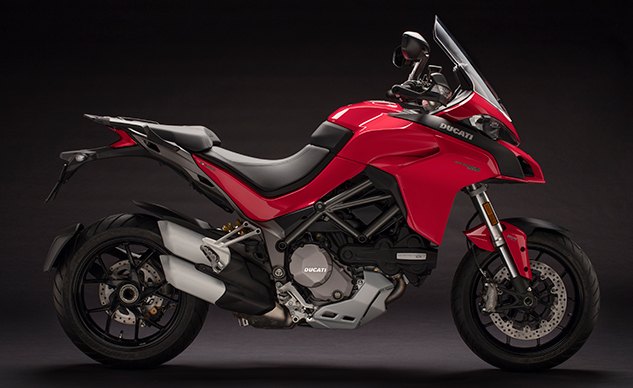
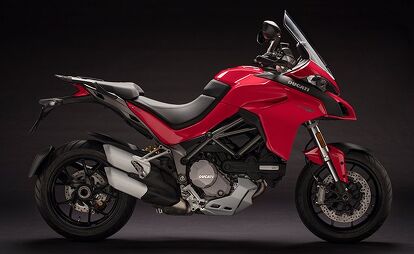





















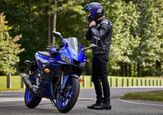
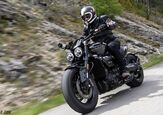
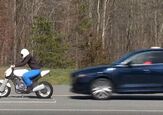
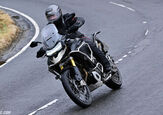
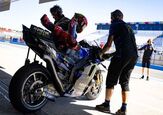
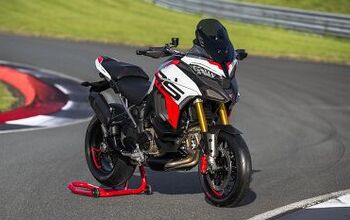
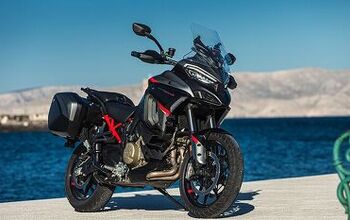
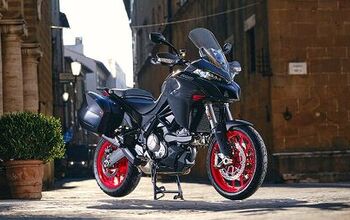
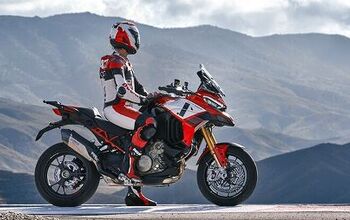
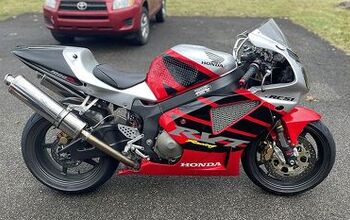


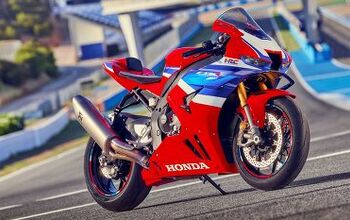
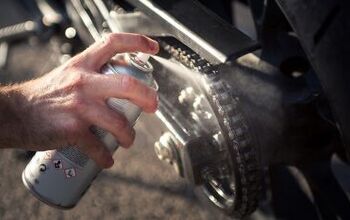
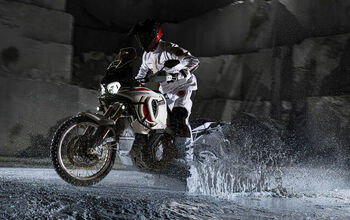
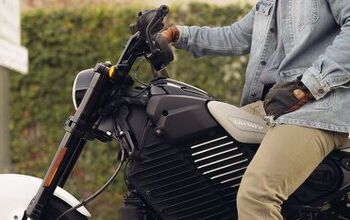


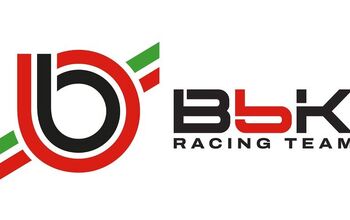
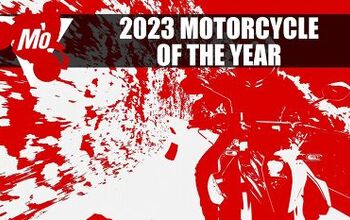
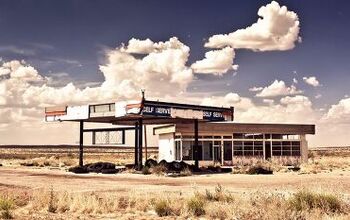
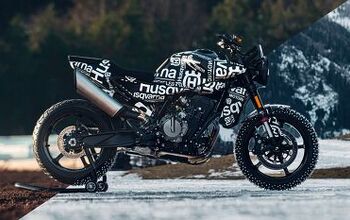
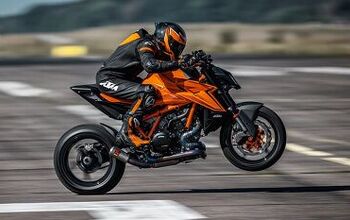
Comments
Join the conversation
Ducati should contract one of the McGuinesses or Dunlops (or even Guy Martin) to take one of the PP versions to the hillclimb and see if it lives up to its name...
Instead of Multistrada 1260, I would prefer Ducati Monster 1200R I had experienced couple of rides, found Monster 1200R a perfect choice.